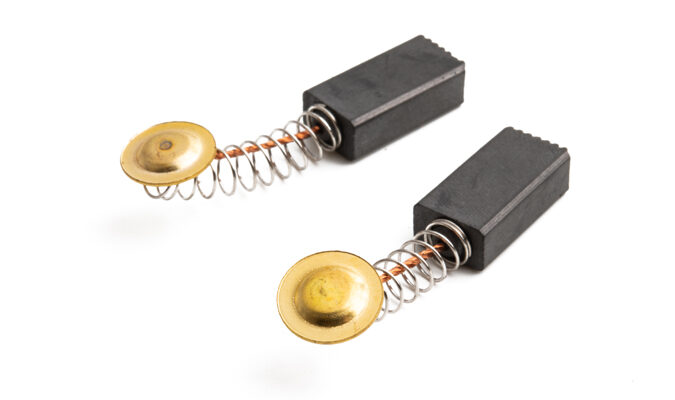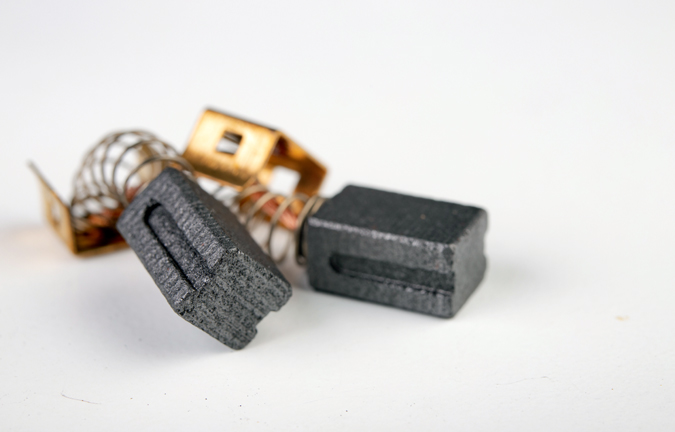
An electric motor brush is a small part of the motor that conducts electricity between the static wires and the moving wires of the motor. Since it serves as an electrical conductor, it’s a crucial part of the motor. Electric motor brushes or carbon brushes come in the form of carbon blocks. There are multiple carbon brushes in a motor or generator.
This article discusses the top 6 things to know about electric motor brushes.
- Importance Of Electric Brushes
Electric brushes are essential since they reduce the damage to the motor. The brushes help transmit the electric current from the outside of the machine to its mid-part. Since the carbon brushes are soft, they tend to wear down because of the friction they’re exposed to. However, the design makes them easily replaceable. The wear and tear of electric motor brushes is desirable since it means it’s protecting the communicator efficiently.
Regularly changing electric motor brushes is essential. If you’re considering buying electric motor brushes, click here for top deals online.
2. Electric Motor Brush Commutation
Commutation is the process of conducting electricity between the wires of the motor. To ensure effective commutation, make sure to consider factors like the atmospheric conditions. Commutating or passing the current to complete the circuit, occurs when two or more carbon brushes contact the commutator.
3. Brush Grades
Brush grades describe carbon brushes’ exact composition and quality. They can be classified into five primary families, with each having a distinct set of properties.
The right brush grade for you largely depends on the motor you have and the environment you’re working in. Working with an expert can help you make the right choice because an in-depth knowledge is necessary to select the grade that works best for a specific application.
Take a closer look at each of the primary brush grade families below:
- Electrographic Brushes – The materials in electrographic brushes are graphitized cartographic materials. They’re manufactured at temperatures more than 2,500 degrees Celsius. The process results in artificial graphite.
This brush-grade family has a low-medium friction coefficient and a medium contact drop. That makes them more suited to high peripheral speeds because of their low electrical loss.
- Cartographic Brushes – The materials in cartographic brushes aren’t graphitic. They’re instead a mixture of graphite powders and coke. Their high resistance makes these brushes communicate well. Cartographic brushes can also withstand variable loads and high temperatures, as well as provide adequate polishing action.

Applications of cartographic brushes include low-voltage battery-powered motors and modern small motors like universal motors. They also work in older ones like those that lack interpoles and have low speed.
- Resin-Bonded Carbon Graphite Brushes – This brush-grade family represents a further development of cartographic brushes. Higher transverse to longitudinal resistance ratio, high contact voltage, and high resistance all characterize this grade. The positive effect on the commutating currents’ damping is also an added feature.
The resin-bonded carbon graphite grade family works well with repulsion motors, three-phase AC commutator machinery, and small to medium-sized generators up to 30 kW (kilowatt).
- Soft Graphite Brushes – This brush grade family has low shore hardness and excellent shock absorption. These are characteristics that make soft graphite brushes well suited for high peripheral speeds. They’re made of artificial graphite and purified natural graphite mixed with additives.
Soft graphite brushes’ applications include synchronous motors’ stainless steel and steel slip rings.
- Metal Graphite Brushes – The brushes that belong to this grade family are dense to very dense. They also have low contact drop and low friction. They operate with high currents and low losses.
Metal graphite electric motor brushes are made from either artificial or natural graphite. The graphite is then mixed with a thermo-setting resin and metal powders like copper powder. Copper-based metal graphite brushes can work well with high-current collection systems, highly loaded, medium-speed AC asynchronous motors, and low-voltage, low-speed DC motors. On the other hand, silver-based brushes can be applied to tachometer generators, pulse transmission to rotating devices, and signal current transmission.
4. Common Causes Of Electric Motor Brush Wear
Some of the common reasons for electric motor brush failure include:
- Electrical overloading or underloading causes damage to the brush
- Fitting the wrong-sized brush or installing brushes incorrectly
- The motor experiencing voltage surges
- Winding faults
- Brushes don’t fit on the commutator’s arc
- Commutator issues
Experts can diagnose these common issues, so motor brushes should be regularly checked to carry out replacements or repairs in the fastest possible time.
5. Maintenance Of Electric Motor Brushes
Carbon brush failures often lead to equipment damage. Maintaining your carbon brushes is essential to ensure the smooth operation of your machines. Take a look at some of the key caron brush maintenance tips to help you keep your machines in top condition:
- Ensure that the brushes are clean and don’t have dust on them.
- Occasionally, check the pressure of each spring and adjust it accordingly.
- Make sure that the brushes can move effortlessly on their holders.
- Make sure that there are no burnt or blackened segments in the commutators.
- Make sure that the bearings are not vibrating excessively.
- Ensure that the risers are properly connected.
- Check the commutator for any signs of its sluggish functioning
- Regularly clean the motors with an air compressor to ensure that there are no issues with the machine.
6. Motor Brush Replacement Or Repair
How often the motors are used will be the basis for the frequency with which electric motor brushes will need to be replaced. Again, regular checking and maintenance of the motor brush are essential here. Note that your commutator ring might get damaged when the electric motor brush starts to wear out.
Dirt buildup or any damage on the brush may also warrant repair or replacement. That’s because the brush won’t be able to freely move anymore when there’s a buildup of dirt and when the holder gets damaged. If that happens, it couldn’t connect with the communicator effectively. Sparking may also occur.
Please don’t risk it; call a specialist immediately to carry out the necessary repair or replacement.
Conclusion
Without properly functioning electric motor brushes, your machine or generator will not function. It’s essential to ensure that you have a proper understanding of these carbon brushes and know how to maintain them effectively.
To ensure that you replace the electric motor brushes in a timely manner, consider how often the motor is used. If the motor is used frequently, you may need to replace them more frequently.
To extend the life of your electric motor brushes, make sure to clean and maintain them regularly so that they function optimally.
Leave a Reply